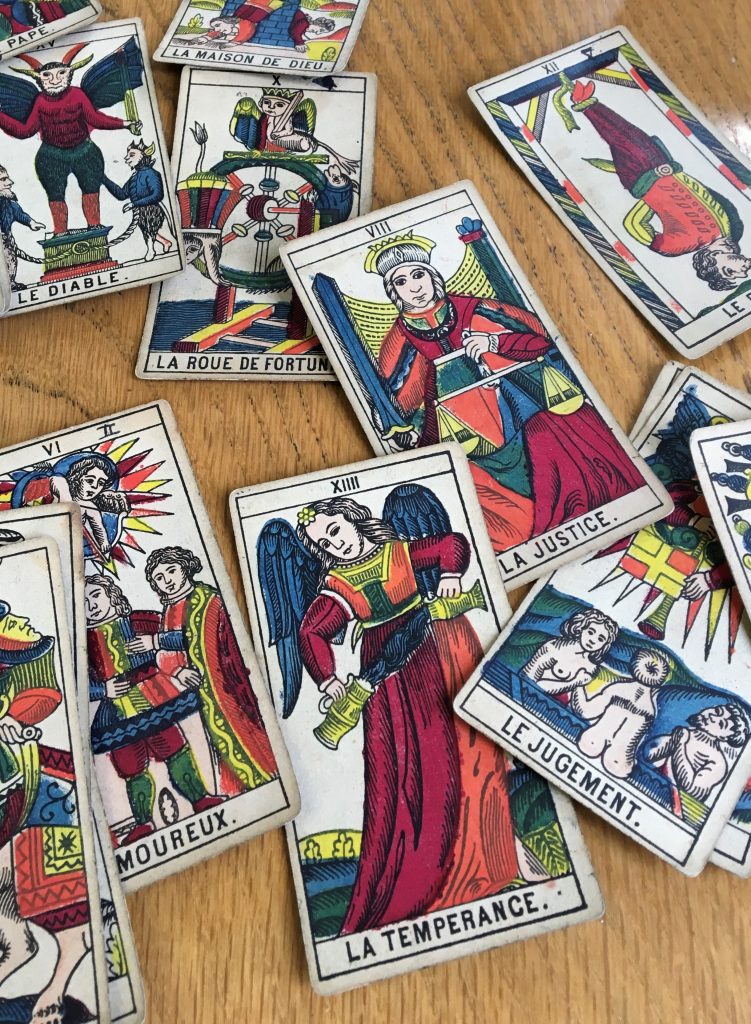
Written by guest blogger Julian Breandán Dean.
If you have ever visited the Yeats exhibit at the National Library of Ireland, you doubtlessly noticed the glass case containing Tarot cards, ritual notebooks, and a portrait of MacGregor Mathers dressed in his magic regalia. Myself, I was dumbstruck the first time I walked past this collection of Yeats’s occult paraphernalia. I knew Yeats had been into magic and the occult, but I had no idea how seriously he took it until I was face to face with his annotated Tarot deck. But, as a scholar, I didn’t really know what to do with this aspect of the poet’s life. As one of my advisors once put it, “the man unironically owned a wand.” How does that fit in with the questions of nationalism, decolonization, and modernism which typically dominate any discussion of the poet? I wanted to find out.
I decided to unironically investigate Yeats’s belief in magic. If he seriously believed in these things, I needed to take them seriously as well. Faith is faith after all. No one would be surprised by scholarship that took T.S. Eliot’s conversion seriously or C.S. Lewis’s faith seriously. So, I decided to learn all I could about Yeats’s occult life and one of his central obsessions: the Tarot. I paid for a couple of readings (some were surprisingly accurate—some not), I learned to read for my friends, and I researched the history of the cards. That is how I came to this article.
After learning about how the images on the Tarot are linked to ideas and affects, I delved back into Yeats’s drama to learn how he was deploying those same images. Rather than relegating Yeats’s occult life to the footnote, my article “The ‘Supernatural Artist’ and the Tarot Fool: Transnational Esotericism in W.B. Yeats’s On Baile’s Strand,” seeks to place it in the forefront. The occult is, after all, a system of belief that helped shape the life and thought of Ireland’s greatest poet. Whether or not you believe that your future can be read in a deck of cards that originated over five hundred years ago, Yeats did, and to fully come to grips with his art, we must take seriously his system of belief—even if that means unironically reading the Tarot.
Julian Breandán Dean is a doctoral candidate in the English Department at the University of Notre Dame. His dissertation focuses on the use of tragedy as form and philosophy in the Irish Dramatic Movement and postcolonial literatures more broadly.
His latest article in Modern Drama entitled “The “Supernatural Artist” and the Tarot Fool: Transnational Esotericism in W.B. Yeats’s On Baile’s Strand” is free to read for a limited time here.
The UTP Journals blog features guest posts from our authors. The opinions expressed in these posts may not necessarily represent those of UTP Journals and their clients.
Comments on this entry are closed.